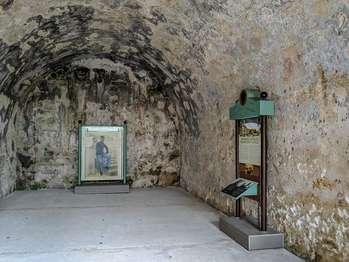Last updated: February 11, 2021
Place
Artillery Complex

Quick Facts
Amenities
2 listed
Historical/Interpretive Information/Exhibits, Historical/Interpretive Information/Exhibits
During times of siege, this room could have been used as a meeting place for the Spanish governor and his officers.
